Two items often come into play when considering yoga accessories: yoga mats and yoga towels. Each has its unique purpose in enhancing the practice of yoga.
Yoga mats serve as the foundation of your practice, offering cushioning, stability, and a defined personal space on the floor. They come in various materials, such as PVC or rubber, providing varying grip levels and comfort.
On the other hand, yoga towels are designed to lie on top of the yoga mat. These towels absorb sweat effectively to maintain a non-slip surface and help keep your mat hygienic by acting as a barrier between you and the mat.
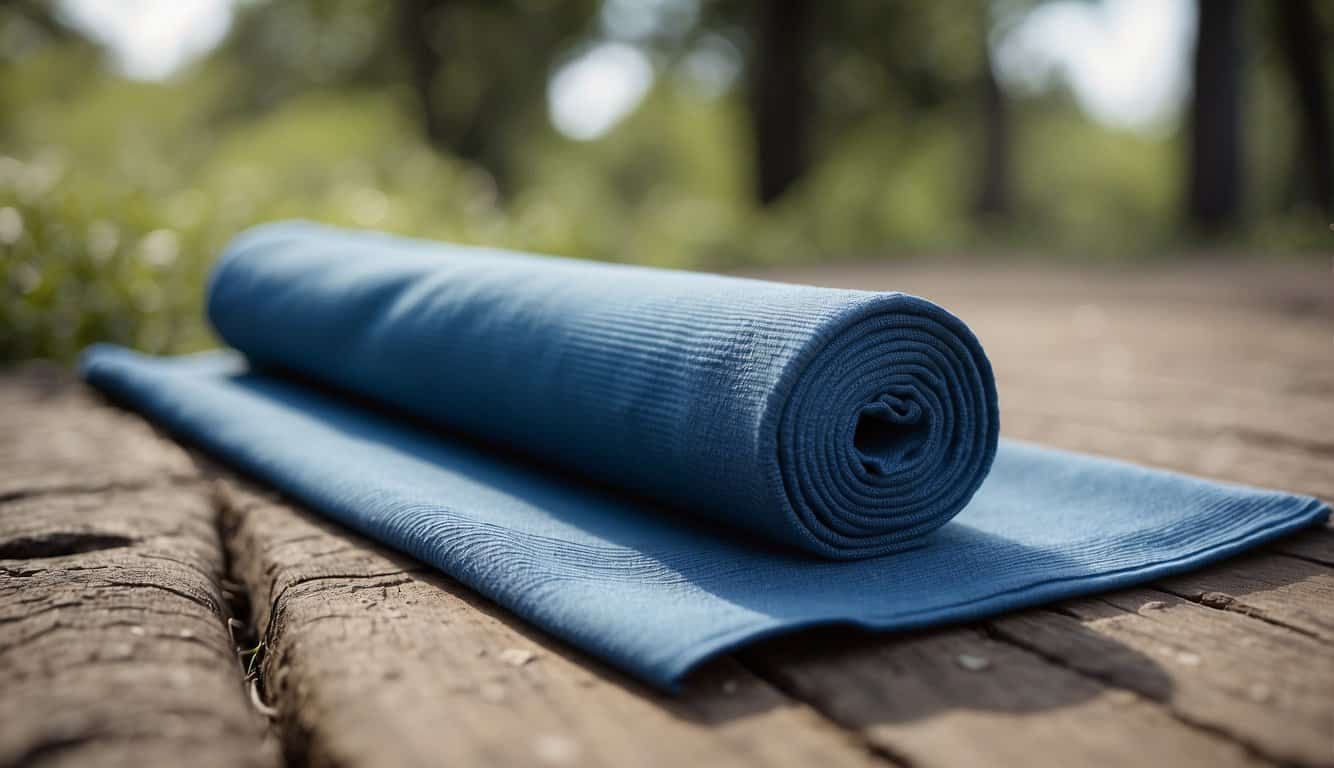
While yoga mats are an essential piece of equipment for any yogi, yoga towels are particularly valuable for those who engage in more intense forms of yoga that induce more sweating. Understanding when to use a towel over your mat can significantly enhance your yoga experience.
The towel can prevent slips by soaking up moisture and providing additional grip. Moreover, using a yoga towel can extend the life of your yoga mat by protecting it from the wear and tear of regular practices.
Both yoga mats and towels require proper maintenance to ensure they provide the best support and hygiene throughout your yoga journey.
Key Takeaways
- Yoga mats provide cushioning and stability for your practice.
- Yoga towels absorb sweat, prevent slipping, and protect yoga mats.
- Proper maintenance of mats and towels can enhance your experience and the longevity of the products.
Differences Between Yoga Mats and Yoga Towels
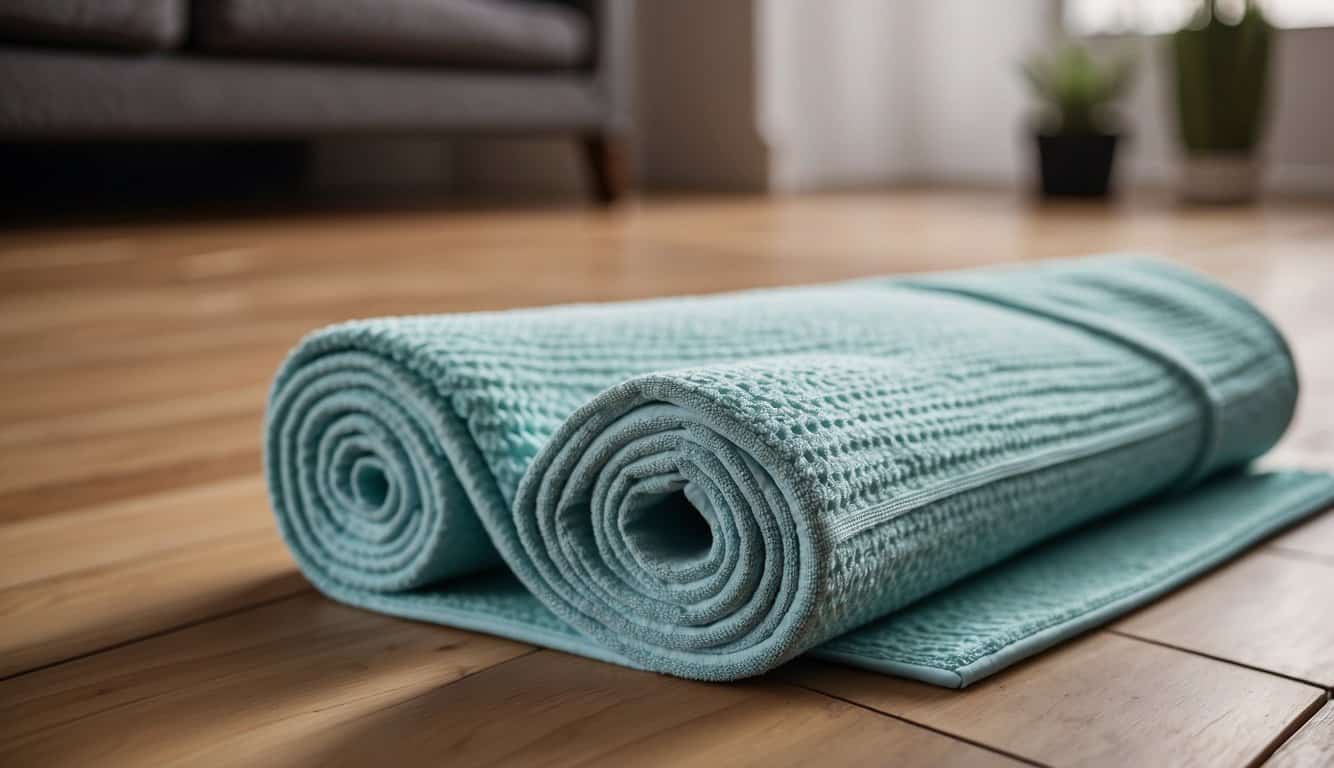
You can enhance your comfort and stability by using a yoga mat or a yoga towel when you practice yoga. Both have distinct purposes and benefits that cater to different aspects of your yoga practice.
Yoga mats, typically made from natural rubber or synthetic materials such as PVC, are designed to be your foundation during practice. They are usually thicker and provide cushioning to protect your joints. They also have a textured surface to prevent slipping and offer a stable grip on the ground.
Table: Characteristics of Yoga Mats and Towels
| Feature | Yoga Mat | Yoga Towel |
|---|---|---|
| Material | Often natural rubber or synthetic | Microfiber or other absorbent materials |
| Purpose | Provide cushioning and traction | Improve hygiene and moisture absorption |
| Use | As a stand-alone for practice | Overlaid on mats, especially in hot yoga |
Conversely, yoga towels are often thinner and more lightweight. They are designed to be placed over traditional yoga mats to absorb excess moisture and enhance hygiene. If you sweat a lot during practice or engage in forms of hot yoga, a yoga towel can be very useful. It keeps your mat dry, prevents slippage from sweat, and is easy to wash.
Remember, mats are typically your go-to for foundational support, whereas towels are often chosen for their moisture-wicking properties and ease of maintaining a clean surface. Traditional yoga mats without the addition of a towel can become slippery with sweat, so that’s where the yoga towel comes into play.
By understanding their role and functionality, you can decide which one or whether both are necessary for your yoga practice.
Materials and Texture
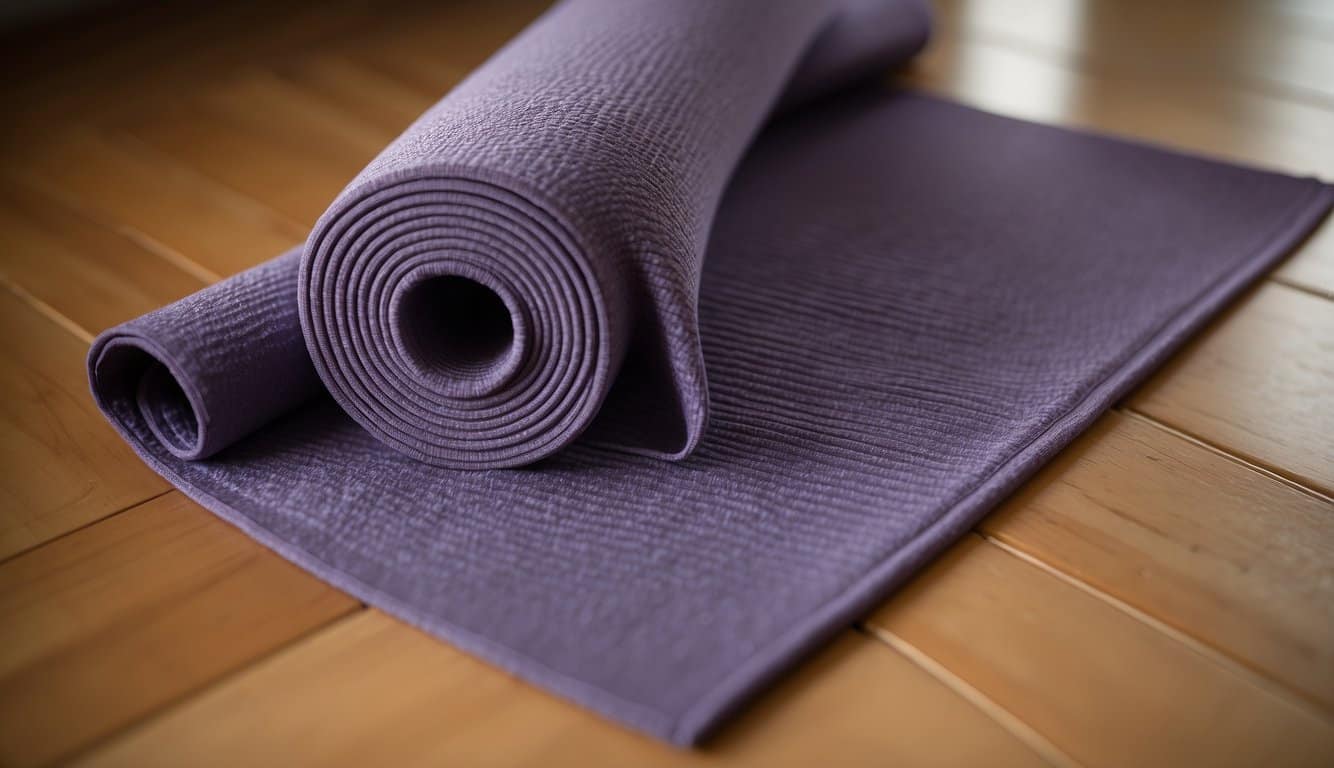
When you choose between a yoga mat and a towel, you’re looking at a blend of materials that offer different performances for your yoga sessions. The key difference lies in their composition: yoga mats come in various materials designed for durability and grip, whereas yoga towels are crafted for high absorbency and slip-resistance over your mat.
What Are Yoga Mats Made Of?
Yoga mats can be made from several materials, offering distinct experiences based on their properties. Most commonly, you’ll find mats made out of PVC, a synthetic material known for its durability and stickiness, which can provide a steady surface for your poses.
Natural rubber is another material option, and it is appreciated for its eco-friendly profile and excellent grip. When choosing your yoga mat, consider:
- PVC: Durable and easy to clean
- Natural rubber: Eco-friendly and non-slip
Remember that the texture is integral—it affects how your hands and feet grip the mat, thus impacting your stability and safety during practice.
What Are Yoga Towels Made Of?
In contrast, yoga towels are made primarily to absorb moisture, essential if you practice hot yoga or tend to sweat a lot. This type of towel is typically made from a microfiber blend, often involving polyester and nylon fibers. This combination is effective as it creates a soft texture while being highly absorbent.
A yoga towel can make a big difference if you often slip on your mat due to sweat. They are designed to:
- Lay flat over your yoga mat
- Provide an absorbent layer, reducing slip hazards
By understanding the fundamental differences in materials and texture between yoga mats and towels, you can make an informed decision that will complement your practice and keep you grounded safely.
Mat or Towel – Usage and Benefits
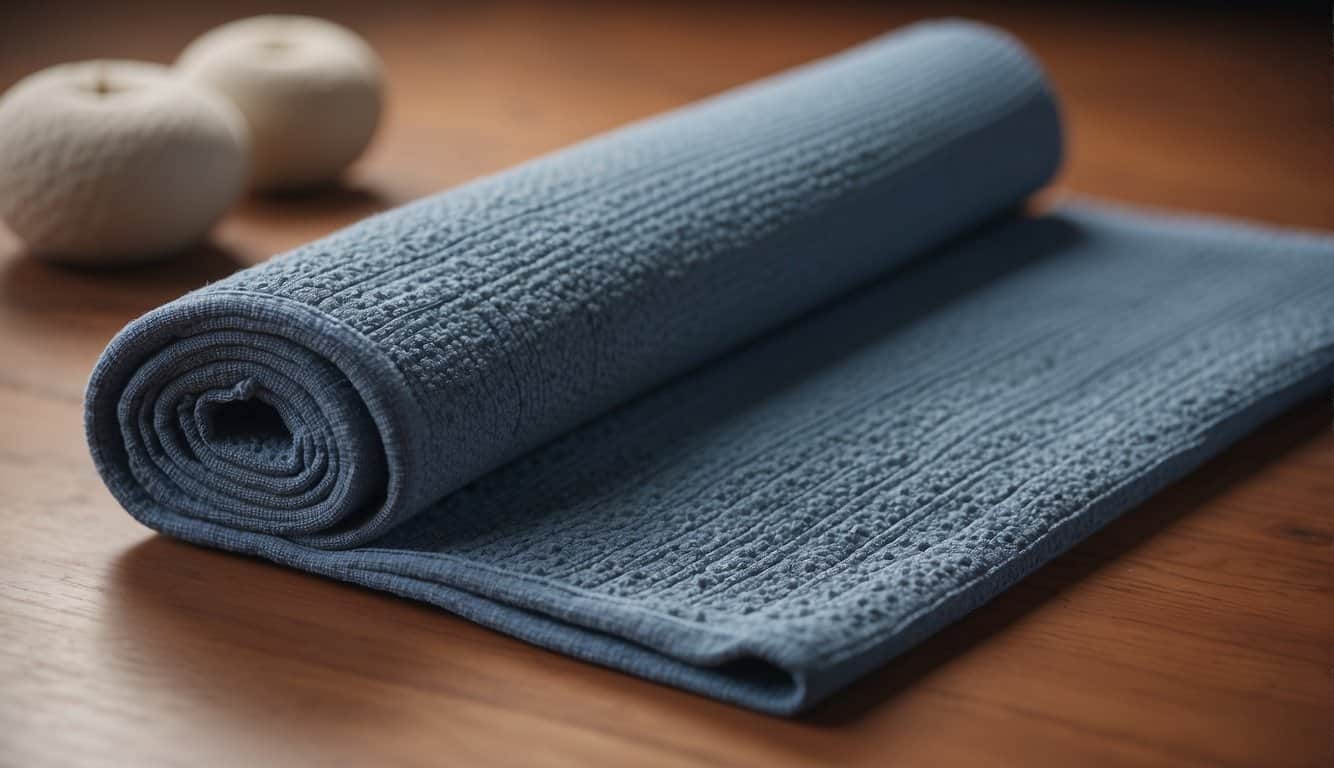
When you step into a yoga class, there are a variety of accessories that can enhance your practice. Yoga mats and towels each serve specific purposes, offering different benefits during various forms of yoga.
Using a Yoga mat or Yoga Towel in Different Types of Yoga
A yoga towel is a game-changer in hot yoga or Bikram yoga, where temperatures soar and sweat is plenty. It’s designed to lay on top of your mat and provide an absorbent layer between you and the surface, preventing slipping caused by moisture.
In contrast, a yoga mat is generally sufficient to cushion your body and prevent slipping on the floor for more traditional forms of yoga practiced in normal conditions.
Advantages of Using a Yoga Mat
When you use a yoga mat, you give yourself a defined space dedicated to your practice. The mat’s material, often PVC or rubber, provides traction and stability, which is crucial for maintaining poses. It also cushions your joints against hard surfaces.
If you’re attending a regular yoga class, a good yoga mat is your foundation, supporting both standing and seated postures.
Advantages of Using a Yoga Towel
A yoga towel, on the other hand, enhances your practice, especially if you work up a sweat. It’s not just for hygiene; as moisture increases, it improves grip.
If you find your hands and feet slipping during a flow, laying a yoga towel on your mat can help you maintain poses without sliding.
It’s a perfect addition to your yoga arsenal for high-intensity sessions or if you prefer an extra layer of stability.
This yoga mat towel features four corner pockets that secure it to the mat, preventing shifting and bunching. It is ideal for hot yoga due to its absorbent microfiber material, dries quickly and minimizes slipping.
This hypoallergenic towel, designed to fit standard-size yoga mats (68″L x 24″W), enhances stability and hygiene during yoga practice.
Hygiene and Maintenance of a Yoga Mat and a Yoga Towel
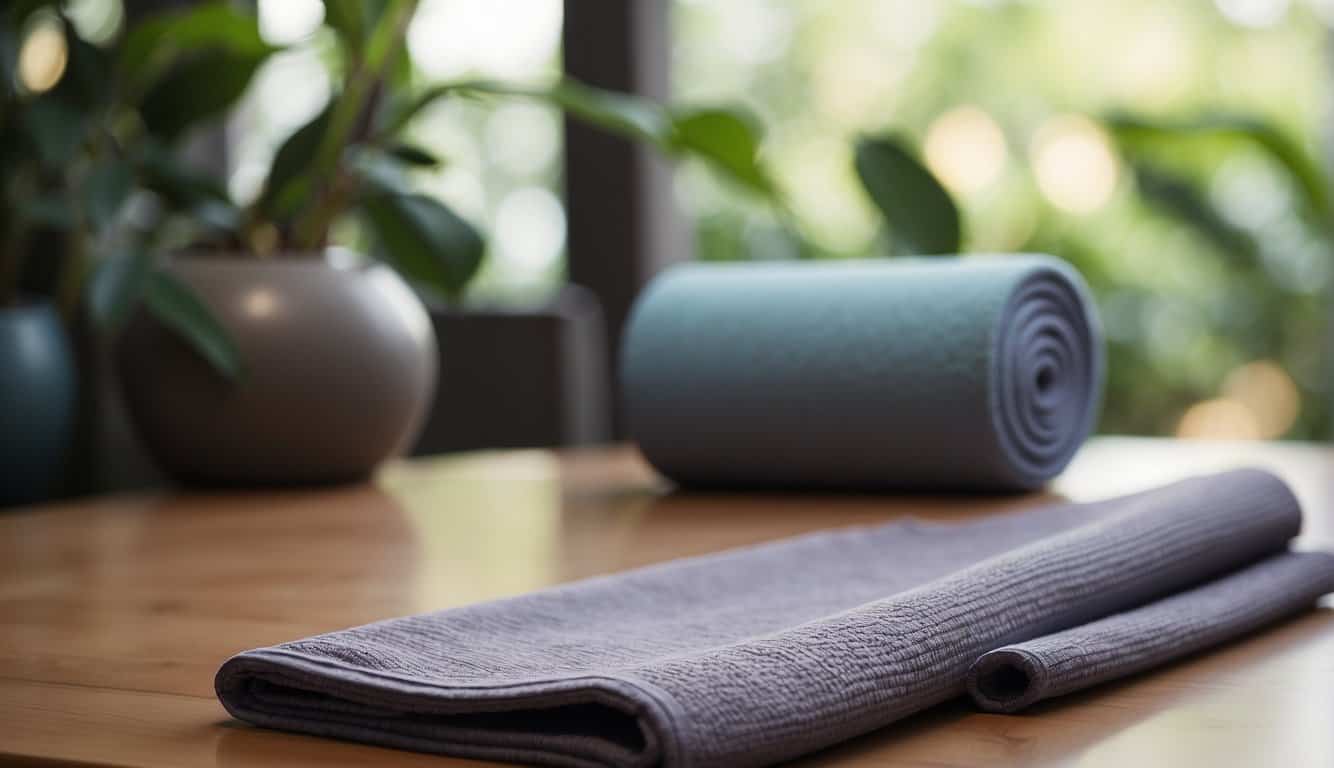
Maintaining the cleanliness of your yoga gear not only ensures a sanitary practice but extends your equipment’s lifespan. Let’s explore how to clean your yoga gear correctly and the importance of using towels for a hygienic yoga session.
Cleaning Your Yoga Mat
Regular cleaning of your yoga mat is crucial, especially if it’s commonly used in shared spaces. Most yoga mats are best cleaned with water and gentle soap. Use a soft cloth to wipe down the surface after each use.
You can create a water and white vinegar solution for effective sanitization for a deeper clean.
If your mat is machine washable, follow the manufacturer’s instructions to avoid damaging the material. After washing, air dry your mat away from direct sunlight to prevent material degradation.
To summarize, here’s how to clean your mat:
- Daily cleaning: Wipe with a soft cloth using water and gentle soap.
- Deep cleaning: Use a solution of water and white vinegar.
- Machine washable mats: Follow the specific instructions provided by the manufacturer.
The Hygienic Aspect of Yoga Towels
Using your own yoga towel adds a layer of hygiene, especially when using shared mats. Towels can absorb sweat and provide a personal barrier between you and the mat. They are typically designed to be machine washable, making them easy to keep clean.
You should wash your yoga towel after each practice, just as you would with a bath towel, to ensure it remains a hygienic cover for the yoga mat. Drying towels thoroughly before storing them prevents the growth of bacteria and mold.
When considering maintenance, remember that towels require regular laundering. Here’s a simple guide:
- After practice: Machine wash your towel with similar fabrics.
- Drying: Tumble dry on low or let air dry completely before storing.
Keeping your yoga gear clean contributes to a more pleasant and hygienic practice for yourself and others.
When to Use Yoga Mats or Yoga Towels
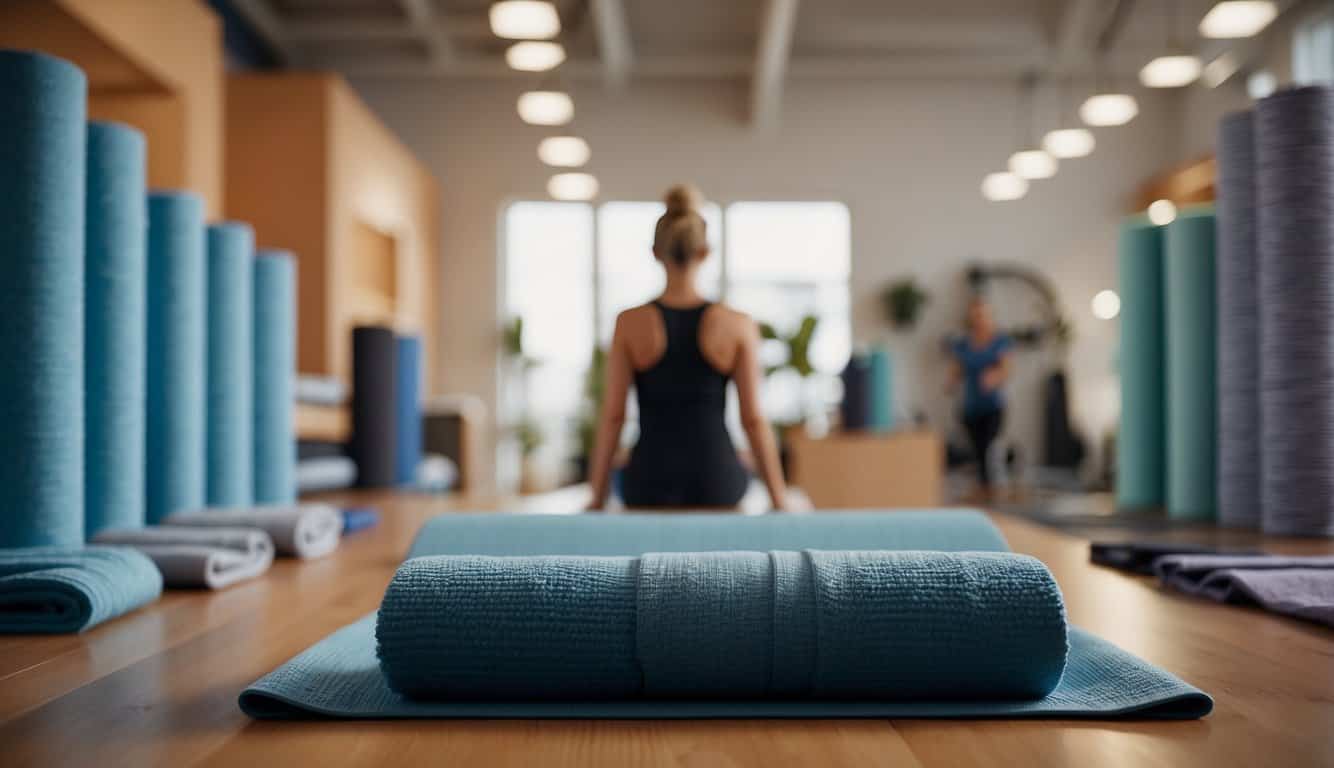
When you’re in the market for a new foundation for your yoga practice, deciding between a yoga mat and a yoga towel is pivotal. Here’s a friendly guide to help you make an informed choice that matches your yoga needs.
Yoga Mats:
- Cushion: Provides more cushioning, which is beneficial for joint support.
- Stability: Ensures a firm grip on the floor to prevent slipping.
Yoga Towels:
- Absorbency: Excellent for absorbing sweat and maintaining a hygienic surface.
- Portability: Lightweight and easy to carry, ideal for the traveling yogi.
Factors to Consider:
- Practice Intensity: A yoga towel might be best if your sessions are vigorous or you tend to sweat.
- Floor Grip: For practices requiring more stability and balance, choose a mat that grips the floor well.
- Cushioning Needs: A thicker yoga mat can provide added comfort if you need extra joint support.
When buying yoga equipment, it’s not just about comfort; it’s also about enhancing your practice. A good mat or towel can differentiate between a focused session and one marred by distractions. Remember to evaluate the specific features of each product (material, durability, and maintenance required) before making your purchase.
Whether you choose a yoga mat or a yoga towel or use a towel and mat (perhaps with a yoga towel on top of your yoga mat), ensure they align with your personal practice and enhance your overall yoga experience.

